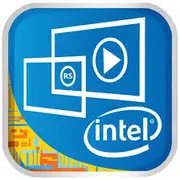Intel Core m5-6Y57

인텔 코어 m5-6Y57: 적당한 성능, 이동성을 위한 선택. 수년 후의 프로세서 분석
2025년 4월
소개
2015년에 출시된 인텔 코어 m5-6Y57 프로세서는 에너지 효율성과 성능 간의 균형이 중요한 초슬림 노트북 시대의 일환으로 자리 잡았습니다. 10년이 지난 지금 이 플랫폼의 장치는 여전히 사용되고 있으며, 특히 중고 시장에서 인기를 끌고 있습니다. 2025년에 이 칩이 여전히 유효한지, 누구에게 적합한지, 그리고 어떤 타협이 필요한지에 대해 살펴보겠습니다.
아키텍처와 공정: 구식 기반이지만 신중한 디자인
코어, 스레드 및 주파수
코어 m5-6Y57는 인텔의 6세대 스카이레이크 아키텍처를 기반으로 14nm 공정으로 제작되었습니다. 이 프로세서는 두 개의 코어와 하이퍼스레딩(4 스레드)을 지원하는 2코어 프로세서입니다. 기본 주파수는 1.1 GHz이며, 터보 모드에서 2.8 GHz까지 오버클럭할 수 있습니다. 당시에는 미니멀리즘의 진전을 나타내었지만, 현재는 애플 M3 또는 인텔 메테오 레이크의 5nm 칩에 비해 스펙이 초라하게 보입니다.
통합 그래픽
인텔 HD 그래픽스 515는 24개의 실행 유닛과 최대 900MHz의 주파수를 가진 내장 GPU입니다. 디스플레이포트 및 HDMI를 통해 4K 비디오를 지원하며, HEVC의 하드웨어 디코딩도 지원하여 2025년에도 여전히 미디어 작업에 유용합니다. 그러나 게임이나 그래픽 작업에는 기능이 부족하여, 낮은 설정에서 CS:GO는 간신히 30 FPS에 도달합니다.
전력 소비 및 TDP: 주요 장점
TDP 4.5W는 주요한 특징입니다. 이는 활성 냉각이 필요 없는 노트북을 제작할 수 있게 해주었으며(예: 2015년 맥북 12"), 완벽한 무소음 운영을 가능하게 했습니다. 현대의 인텔 코어 U 시리즈는 TDP가 15W이고 애플 M1은 10-20W(상당히 높은 성능)를 가집니다.
하지만 낮은 TDP는 성능을 제한하는데, 장시간의 부하에서는 과열로 인해 주파수가 저하됩니다. 특히 컴팩트한 바디에서 더욱 그렇습니다.
성능: 기본적인 작업에 적합
사무 작업 및 멀티미디어
- 지크벤치 6: 760 (싱글코어), 1298 (멀티코어). 2025년에 비해 이는 평균 이하입니다: 예를 들어, 저가형 인텔 N100(2023)은 ~1100/3500을 기록합니다.
- 실제 시나리오:
- 10개 이상의 탭으로 웹 서핑 — 프레임 저하가 발생할 수 있습니다.
- 4K 비디오 — 하드웨어 디코딩 덕분에 매끄러운 재생.
- 마이크로소프트 오피스, 줌 — 안정적으로 작동하지만 파일 변환 또는 프레젠테이션 렌더링은 시간이 걸립니다.
게임
- 간단한 게임(Stardew Valley, Minecraft) — 낮은 설정에서 최대 40-50 FPS.
- 클라우드 게임(GeForce NOW, Xbox Cloud) — 인터넷이 안정적일 경우 최적의 선택.
터보 모드: 일시적 부스트
짧은 부하(앱 실행, PDF 렌더링) 시 프로세서는 2.8 GHz까지 가속하지만, 10-15초 후 기본 주파수로 돌아옵니다. 쿨러가 없는 슬림 노트북에서는 이를 통해 케이스가 빠르게 뜨거워집니다.
사용 시나리오: 2025년에 적합한 사람은 누구인가?
1. 학생들 — 노트필기, 온라인 강좌, PDF 작업에 적합.
2. 여행자들 — 8-10시간의 배터리 수명을 가진 컴팩트한 기기.
3. 세컨드 PC — 이동용 보조 장치로 활용.
4. 사무 작업 — '무거운' 엑셀 또는 그래프 작업이 필요하지 않을 경우.
부적합:
- 포토샵 또는 다빈치 리졸브에서 작업하는 프리랜서.
- 게이머(클라우드 서비스 제외).
배터리 수명: 과거의 장점
코어 m5-6Y57을 탑재한 노트북의 평균 사용 시간은 8-10시간이며, 적당한 부하(밝기 50%, Wi-Fi)의 상태에서입니다. 이는 다음과 같은 요소 덕분입니다:
- 스피드 쉬프트 기술 — 부하에 따른 주파수 신속 조정.
- 전력 절약 모드 — 사용하지 않는 부품의 비활성화.
그러나 현대 프로세서(예: 스냅드래곤 X 엘리트)는 유사한 배터리 수명에서 두 배 이상의 성능을 제공합니다.
경쟁 제품과의 비교
- 인텔 코어 i5-1135G7 (2020): TDP 15W, 4코어, 8스레드. 지크벤치 6에서 1500/4500. 중고 노트북 가격 — $300-400.
- AMD 라이젠 3 7320U (2022): 4코어, TDP 15W, 젠 2. 점수 — 1200/3500. 신제품 가격 — $500부터.
- 애플 M1 (2020): 싱글코어 — 2300, 멀티코어 — 8000. 중고 시장에서 맥북 에어 M1 — $600-700.
결론: 코어 m5-6Y57는 2020년대의 저가형 모델에도 뒤지지만 가격에서는 경쟁 우위를 보입니다(중고 울트라북은 $150-250).
장단점
장점:
- 패시브 냉각(퇴직한 작업).
- 2025년에도 기본 작업에는 충분함.
- 중고 시장에서 저렴한 가격.
단점:
- 낮은 멀티코어 성능.
- 최신 표준 미지원(Wi-Fi 6, 썬더볼트 4).
- 제한된 업그레이드: 대개 RAM과 SSD가 납땜되어 있습니다.
노트북 선택 추천
2025년에 코어 m5-6Y57 장치를 고려하고 있다면 다음 사항에 주의하세요:
1. 장치 유형: 2015-2017년 울트라북(예: 델 XPS 13 9350, 레노버 요가 900).
2. 화면: 4K보다는 풀 HD가 더 선호됩니다(GPU 부담이 적습니다).
3. SSD: 256GB 이상의 NVMe 유형이 작업 속도를 향상시킵니다.
4. 포트: USB-C 충전 지원이 있으면 유용합니다.
조언: 배터리 상태를 확인하세요. 8-10년이 지나면 용량이 40-50% 줄어들 수 있습니다.
최종 결론
2025년에 인텔 코어 m5-6Y57은 다음과 같은 사람들에게 적합한 선택입니다:
- 인터넷 및 사무 작업을 위한 저렴한($200 이하) 노트북을 찾는 사람.
- 조용함과 컴팩트를 중시하는 사용자.
- '무거운' 애플리케이션을 사용할 계획이 없는 사람.
주요 장점: 미니멀리즘, 긴 배터리 수명, 접근 용이성. 그러나 향후 업그레이드나 전문 작업을 위해서는 최신 솔루션(저가형 카테고리에서도) 을 고려하는 것이 좋습니다.
기초적인
CPU 사양
메모리 사양
GPU 사양
여러 가지 잡다한
벤치마크
다른 CPU와 비교
소셜 미디어에서 공유하기
또는 링크로 소개하기
<a href="https://cputronic.com/ko/cpu/intel-core-m5-6y57" target="_blank">Intel Core m5-6Y57</a>